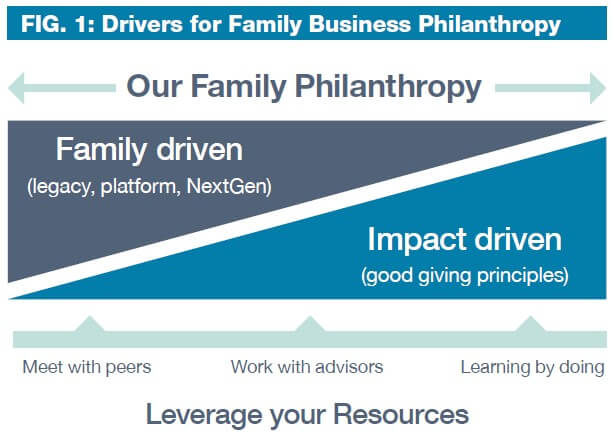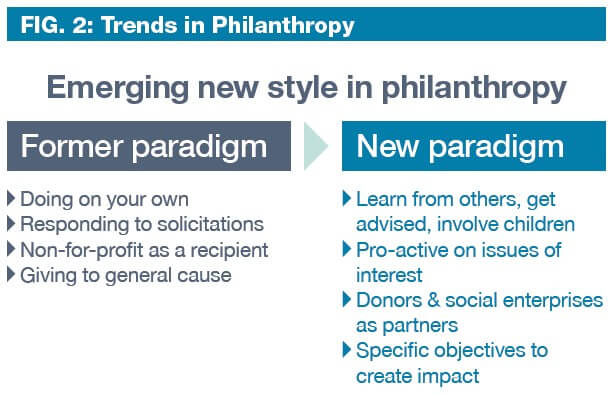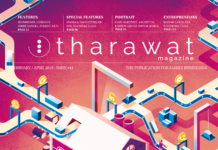Family business philanthropy, though widely practiced all over the world, is an area that is still unexplored and little commented on. The field is, however, fast evolving and has witnessed much innovation. Etienne Eichenberger, Co-founder of Wise – Philanthropy advisor, and Jessie Johnsson, Key Client Manager at Wise, discuss what makes a successful engagement and the benefits for families that get involved in philanthropy. Two case studies are presented that illustrate the successful implementation of philanthropy for families in business.
Philanthropy: Are we observing a momentum?
Philanthropy is an evolving sector. The 2010 World Wealth Report by Merryll Lynch and Capgemini, found that the allocation of High-Net-Worth-Individuals in philanthropic activities grew in every regions except North America. The same report reveals that 35% of HNWI in the Middle East said they planned to increase their level of philanthropic engagement this year. Every region and country has its own philanthropic culture. There currently seems to be an interesting momentum for family businesses in the Middle East. Two observations draw our attention.
While family businesses are playing an important role in the economy and studies have regularly shown that on the long-term they outperform other businesses, there is a continuous challenge of succession to the next generation. Our observation is that an increasing number of family businesses are reaching a moment in which the questions of transition and family governance are essential. This long-term vision of family businesses, striving to insure that the future generations will benefit from the successful enterprise, can benefit from the platform, which philanthropy offers to them.
In parallel, family businesses are increasingly becoming global actors in their sector and, thus, developing a more global commitment. These businesses are likely to seek a more international approach to the act of giving in addition to continuing their charity to their communities.
Family giving: how it mirrors the family business
In our experience, we often observe that the impulse to engage in philanthropy often comes from one family member before it turns into a family project. Philanthropy is plural and the reasons to involve the family are as varied as families themselves. Here are some of the common impetuses:
Nurturing family legacy
Family entrepreneurs’ long-term vision for their business is anchored in the ambition to create value and wealth for their descendants and for society. The business development is often aspired by sustainability and these entrepreneurs want the future generation as well as the community to benefit from their success. Hence, philanthropy becomes a natural expression of personal and spiritual values. It can translate the desire to ‘give back to the community’ and help the development of action promoting general interest to leave a strong family legacy.
Strengthen the bond between and among generations
Philanthropy can become a common ground, or a sort of neutral ground that can include parents, children, partners, and grandchildren in a project that is not the family business. In other words, it becomes a place for encounters, dialogues, or exchanges of shared altruistic interests. It is a wonderful opportunity to bring together, and even to unite family members. It also provides a space to create new conversation topics, especially around intangible values. As such, it also offers opportunity for personal growth. In an increasingly rapidly changing cultural, economic and social context, sharing a common family project can bridge geographic distances as well as generational gaps. In this sense philanthropy is a channel between and among generations.
Involving the next generation
Philanthropy can also be a learning tool giving parents the possibility to…
1. Accustom their children to share their resources and to give them the opportunity to do so,
2. Guide them in finding their modus operandi that will help shape their personalities,
3. Learn how to defend one’s point of view within the family,
4. Make them understand the value of money and teach them to work together,
5. Explain the importance of wealth management
In this sense, it can help the younger generation to acquire practical skills and develop the entrepreneurial attitude that will be important in life as well as in the business world. One of the approaches to involve the younger family members is to have a separate next generation fund allowing them to allocate smaller grants to their individual choices. This experience helps them to take responsibility and to develop confidence by recognising their preferences.
Some Good Giving Principles?
Donors want generosity to go hand in hand with real opportunities. However, in the words of a donor “the hardest part is to find a balance between heart and reason- it is a perpetual challenge”. Maintaining professional standards is, nevertheless, essential to families who have built their business successfully. In other words, being good at doing good.
Pro-active engagement
“Giving” is about making choices and taking a position on what you consider to be the right course of action. “Giving” is also about selecting trustworthy actors on issues close to your heart in order to optimise the impact of a donation and to be part of a rewarding and challenging experience. Such an engagement calls for a rigorous definition of interests to ensure that the best suited partners and the most appropriate mechanisms are found.
Project approach
At a time when greater transparency and accountability are called for, having the right tools for project management has become essential. Project management is a complex process that requires multiple stages including the planning of objectives and results, taking into account the predictability and sustainability of a project. Defining a specific project within the chosen organisation will enable the donor to get to know the partner organization better and to build trust for greater impact.
Exit strategy
The sustainability of the organisation is assured once it can provide its activities autonomously or with a variety of support. Predictability lets an organisation anticipate the end of a support cycle. An exit strategy combines these two perspectives. At the same time an exit strategy allows for a project planning phase (3 to 5 years). When finalising this phase, an analysis of the challenges, failures and successes of the project serves as lessons for future improvements. At the end of a project cycle you will be able to choose between renewing your support for a new phase or project, or retract from the organisation with the feeling of having contributed to a significant and lasting impact.
Leveraging your engagement
It is important for donors to ensure that their family dynamic as well as their available resources converge to fulfil social impact. For many families time is a constraint and financial resources are limited. We draw from our experience working with families to put forward hereunder ways of leveraging philanthropic engagement:
Meet with peers
Inspiration through peers is important. Gatherings that are exclusively for families engaged in philanthropy allows donors to learn about other families’ modus operandi or discuss pertinent issues ranging from strategic choices of funding approaches to family dynamic. This opportunity to share practical experiences among peers allows donors to enrich their philanthropic engagement.
An exclusive donors’ network such as ‘Families in Philanthropy’ provides a platform to discover and share ideas with families represented across different generations involved in philanthropy.
Work with advisors
Giving involves choosing. In a dynamic sector where choosing organisations you trust in areas you are drawn to or making common family decisions can be overwhelming, getting the support of professional advisors can be key. “They help us figure out what we can expect from the various projects that are presented to us and more importantly, they share their experiences at a time when we could get carried away by excessive idealism” says a member of a family who relies on philanthropy advisors for their engagement.
Learning by doing
Learning from experiences is an important part of philanthropy. A philanthropic engagement has several stages: the initial phase, based on a few issues that speak to us, where the donor can test his assumptions by making preliminary commitments; the evaluation phase where you highlight what you liked, what worked and what you learned from exchanges with other philanthropists; the expansion phase where the initial pilot is scaled up while refining the principles of action; and the learning phase in which you take the time to review your experiences and learn from them. Philanthropy is multi-faceted and it is important that the initial vision be allowed to evolve.




















